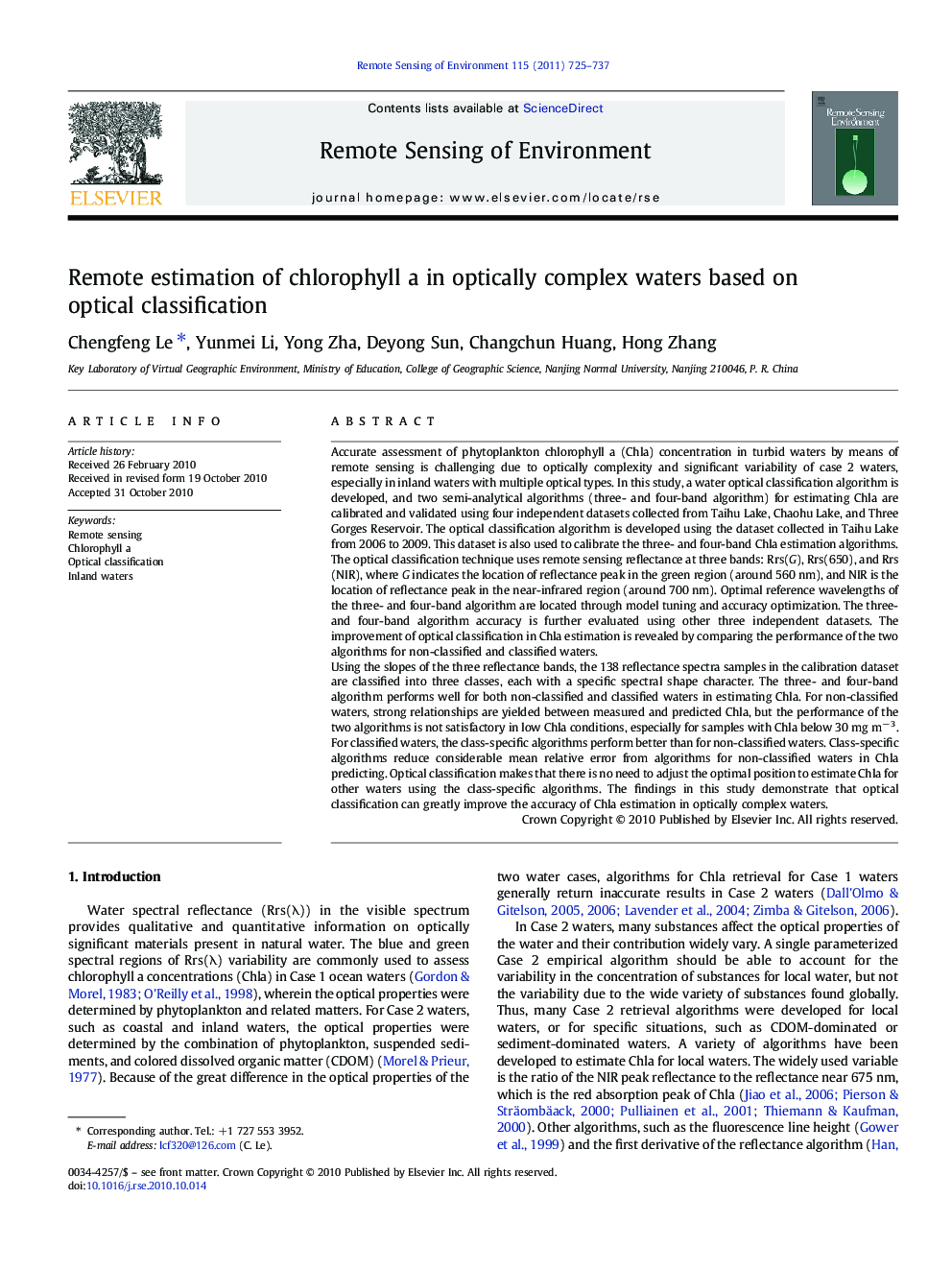| کد مقاله | کد نشریه | سال انتشار | مقاله انگلیسی | نسخه تمام متن |
|---|---|---|---|---|
| 4459670 | 1621295 | 2011 | 13 صفحه PDF | دانلود رایگان |

Accurate assessment of phytoplankton chlorophyll a (Chla) concentration in turbid waters by means of remote sensing is challenging due to optically complexity and significant variability of case 2 waters, especially in inland waters with multiple optical types. In this study, a water optical classification algorithm is developed, and two semi-analytical algorithms (three- and four-band algorithm) for estimating Chla are calibrated and validated using four independent datasets collected from Taihu Lake, Chaohu Lake, and Three Gorges Reservoir. The optical classification algorithm is developed using the dataset collected in Taihu Lake from 2006 to 2009. This dataset is also used to calibrate the three- and four-band Chla estimation algorithms. The optical classification technique uses remote sensing reflectance at three bands: Rrs(G), Rrs(650), and Rrs(NIR), where G indicates the location of reflectance peak in the green region (around 560 nm), and NIR is the location of reflectance peak in the near-infrared region (around 700 nm). Optimal reference wavelengths of the three- and four-band algorithm are located through model tuning and accuracy optimization. The three- and four-band algorithm accuracy is further evaluated using other three independent datasets. The improvement of optical classification in Chla estimation is revealed by comparing the performance of the two algorithms for non-classified and classified waters.Using the slopes of the three reflectance bands, the 138 reflectance spectra samples in the calibration dataset are classified into three classes, each with a specific spectral shape character. The three- and four-band algorithm performs well for both non-classified and classified waters in estimating Chla. For non-classified waters, strong relationships are yielded between measured and predicted Chla, but the performance of the two algorithms is not satisfactory in low Chla conditions, especially for samples with Chla below 30 mg m− 3. For classified waters, the class-specific algorithms perform better than for non-classified waters. Class-specific algorithms reduce considerable mean relative error from algorithms for non-classified waters in Chla predicting. Optical classification makes that there is no need to adjust the optimal position to estimate Chla for other waters using the class-specific algorithms. The findings in this study demonstrate that optical classification can greatly improve the accuracy of Chla estimation in optically complex waters.
Research highlights
► A new optical classification algorithm was developed based on above-water reflectance.
► Two semi-analytical algorithms were calibrated and validated.
► Optical classifying improves the chlorophyll a estimation accuracy greatly.
► The four-band class-specific algorithms can be used to other waters without adjusting.
Journal: Remote Sensing of Environment - Volume 115, Issue 2, 15 February 2011, Pages 725–737